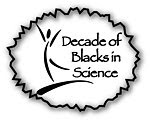The two year celebration of research, discovery, and social studies of the globe’s Polar Regions comes to a close. International Polar Year 2007-2009 ends March 31st. Educators and Research teams from the around the world ramped up efforts to learn as much as we can about the ends of the earth before they are changed forever by climate change.
This will be my final book review dedicated to IPY. Title: Scary Creatures of the Arctic
Title: Scary Creatures of the Arctic
Author: Penny Clarke
Publisher: Scholastic
The Arctic is a very cold and windy place, but it is teeming with life. For thousands of years the plants, animals, and people have managed to get what they need from this harsh climate by paying attention to the patterns. Presenting a combination of photographs and illustrations the book shows us arctic landscapes, wildlife, and the people who live on top of the world and how they survive. This is a perfect introductory ecology book about this biome for third-fifth graders.

The author recounts the life and aim to survive of an Ookpik, the Inuit word for snowy owl. This hardy species of owl lives all-year in the Arctic, hunting in open areas and in day light. But if food resources become limited they are known to migrate some seasons. They fly south to Canada and New England. This is the story of an ookpik who spent a winter in the Adirondack Mountains of upper state New York. Much to the delight of bird watchers, that owl spent the winter in a local town and farming community reaping the benefits of abundant mice, voles, hares, and small birds. It is a delightful book with beautiful watercolor illustrations.



























 A view from the center of the moderately populated town, the ocean is in the background.
A view from the center of the moderately populated town, the ocean is in the background. A better view of the ocean.
A better view of the ocean.
 This is the view from my door at the
This is the view from my door at the 
 The island is connected to other half of
The island is connected to other half of 



































